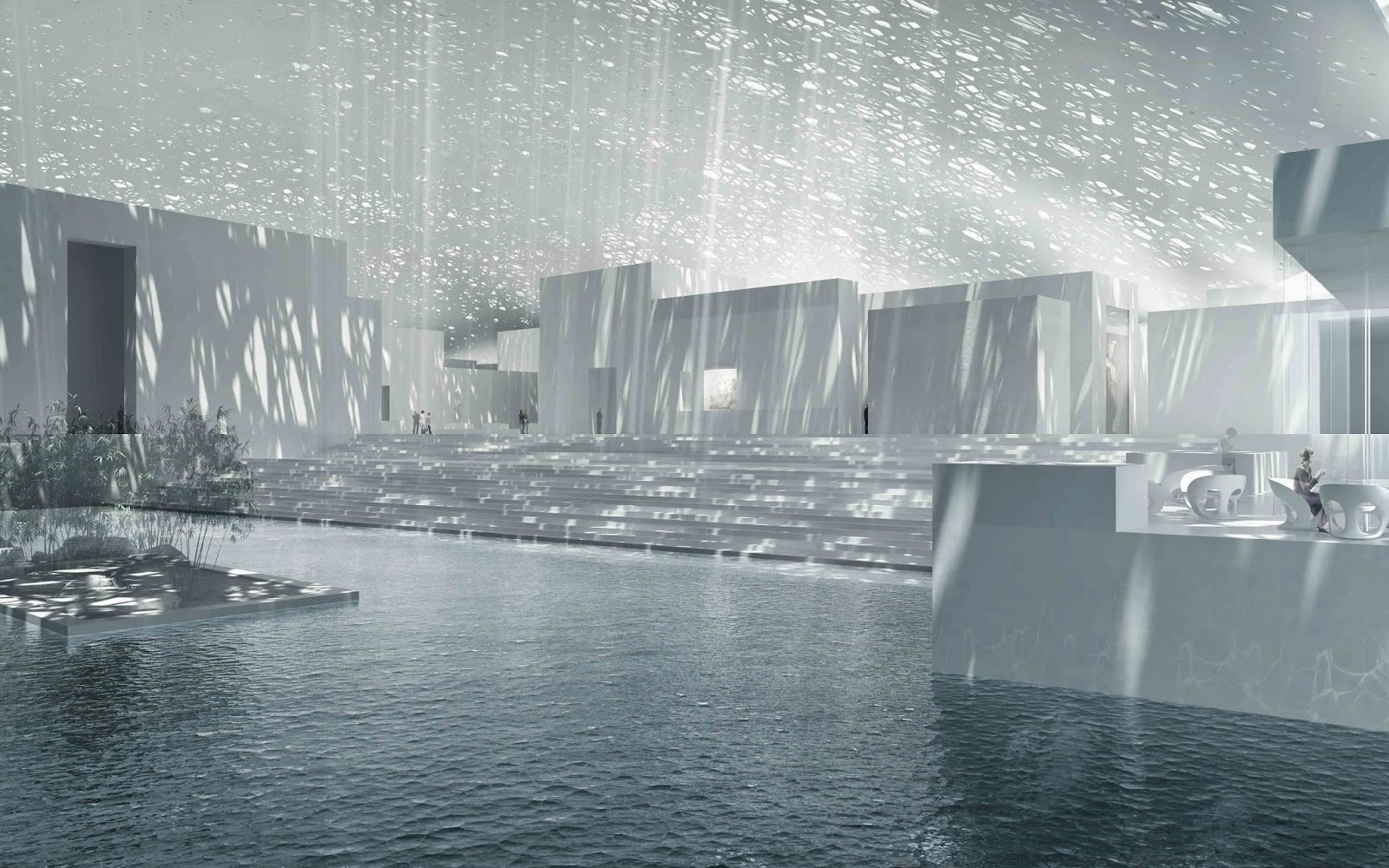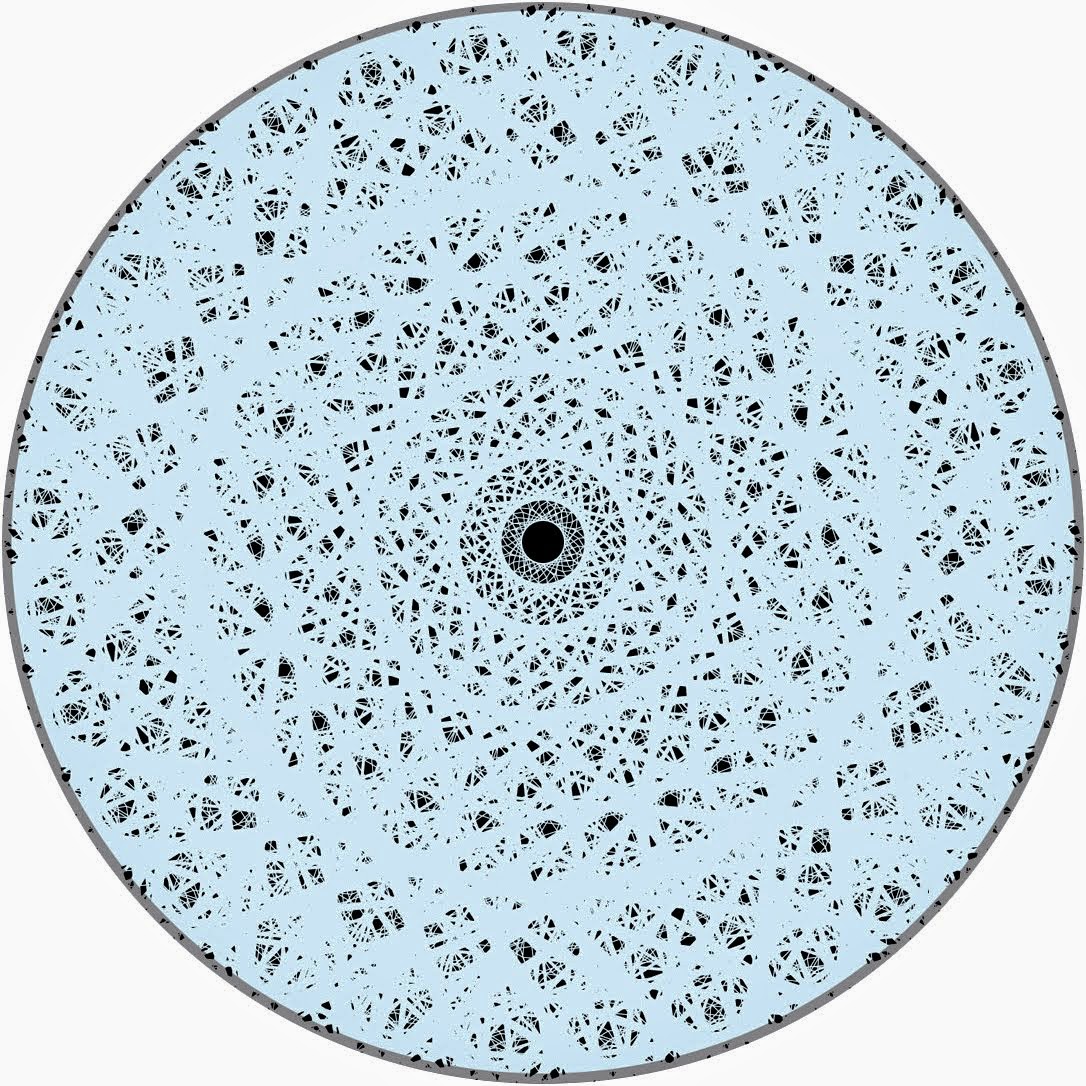ARCH689 Project 1-Mark Liang
The Louvre, Abu Dhabi
Architect Ateliers: Jean Nouvel
Client: TDIC
Design engineer: Buro Happold
Project manager: AECOM
Location: Saadiyat Island, UAE
Completion date: 2015
Video:
Description:
The Louvre Abu Dhabi
Museum, designed by Jean Nouvel, aims at creating a welcoming world which associates lights and shadows in a peaceful atmosphere. Its objective is to belong to its country,
to its history, to its geography. Its
key way of achieving this was through the roof’s unique fractal perforated
pattern.
Each of the cladding
layers, including the structure, is based on a simple base pattern combined to
create the final effect.
After analysis, it is
clear that all the fascinating effect coming from the overlapping of several
different layers with the same pattern. The only difference between these
layers is the rotation of these patterns that makes the effect of interception.
Process:
The
process of creating the dome starts from a mesh. Weaverbird
is used to abstract each edges of the mesh. Then
I concert these lines into springs and make the mesh be fed to a kangaroo
definition.
The
naked vertices here is to separate the points into two parts, the first one is
called naked points, which are connected to the anchor points in kangaroo, the
second one is clothed points, which is connected to the force point
By
giving kangaroo a U-Force node in the positive Z direction.
The mesh takes the shame of a dome.
In order to manipulate the dome, the dome
has to change from mesh to surface, the first step is to extract the longest
curve line from the mesh dome.
The second step is to move it to both sides of the dome to loft a surface.
Since
the perforated pattern comes from several layers overlapping and rotation. So
the surface will be copied and rotated.
The
last job is to attach the pattern on these surfaces. There are three steps, one
is surface box that divides the surface into boxes.
Second step is make the basic pattern from 2-D to 3-D.
The last one is morph that attachs the pattern into surface boxes.
The
last step is to trim the surface edge to make it the same as the original dome.
Use the solid difference battery to get this job done.
Add inner buildings within the dome.
Rendering


















